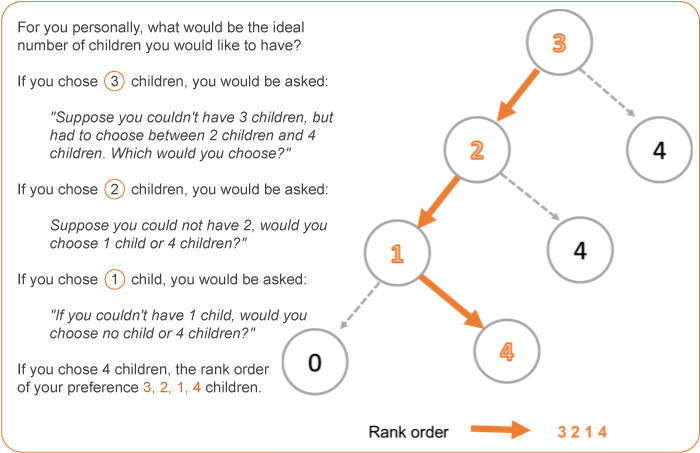Fertility preferences and intentions (cont.)
Coombs scale
Coombs scale is derived from psychological measurement theory on scaling attitudes and preferences (Coombs 1974). The instrument provides latent desires in addition to the most preferred family size. The tool was especially used in the 1970s in the US and developing countries, such as Bangladesh, Malaysia, Mexico, Turkey and Morocco, and more recently in the Netherland.
Introductory question is:
"For you personally, what would be the ideal number of children you would like to have?
Based on the response to the introductory question, a respondent is asked to answer subsequent questions until s/he selects either zero or the maximum number pre-specified in a study.
"If you couldn’t have Y (number given) would you rather have X (lower number) or Z (higher number)?”
The scale assesses psychological distance between the points. For instance, two persons may have the same first response, but the subsequent choices reveals that their preference structure may be very different.
Figure 11: A hypothetical course of the Coomb Scale.

Source: adapted from Bühler et al. (2010)
Advantages:
The scale provides latent desires about having a smaller or larger number of children, and upper and lower limits of desirable family size. Moreover, the good predictive ability has been shown in the studies.
Limitations:
The instrument relies on an assumption that individuals have a single-peaked target of family size, and could rank their fertility. Forced decision about more preferred family size may lead them to provide socially desirable responses.